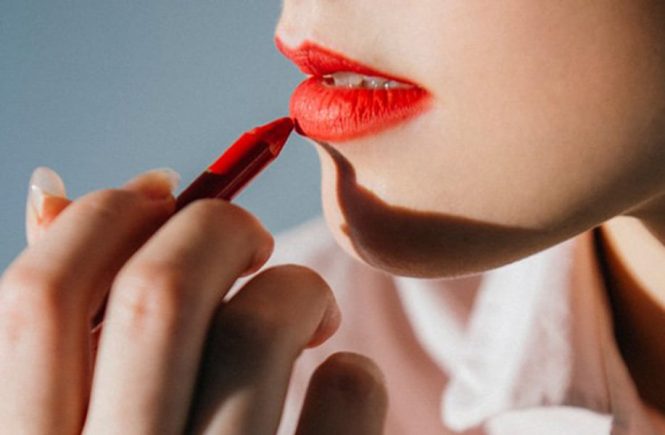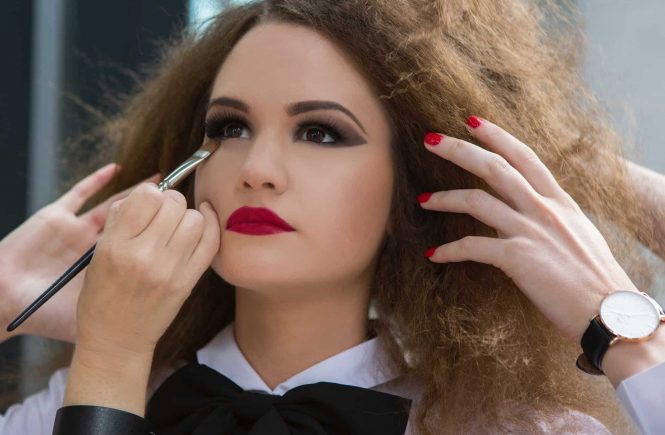If you’re looking for a job as a makeup artist, you really need to sell your skills! Makeup artistry is an incredibly competitive industry and especially if you’re wanting to be a makeup artist for MAC or other similar cosmetics company, you’ll need to stand out from the crowd.
Along with a certification (a Certificate III is usually the minimum needed), you’ll also need to show your skills, special interests/niches in the industry and what you can bring to the job. Your makeup portfolio and resume are absolutely vital to getting the job! And of course, you’ll also want to include a great cover letter.
Here are our top tips for a great makeup artist resume:
1.Introduce yourself.
You’ll need to provide your basic contact info including name, contact number, address, email address and your ABN (if you have one).
2.Detail your education.
Start by listing your most recent course, then work backwards. If you’re still studying or in the process of completing your Certificate III, then make sure to list it alongside the name of the institution. Also include the start and finish dates of all courses – and repeat this all the way back until secondary school. This is the farthest back that you’ll need to list.
3.Add your employment details.
This is similar to detailing your education… start with your most recent role and work your way back. Be sure to include details such as the length of your employment and your responsibilities for each role.
Tip: Be creative, and make sure not to sell yourself short when you list your experience! Even if you haven’t yet gained paid employment as a makeup artist, you can still list any informal or volunteer work that can show your skills. This will show that you are proactive and part of the community. Any experience shows that you can be reliable and responsible, which is crucial to any job.
4.List your achievements.
Have you won any sort of awards? Have you been accoladed in your studies? This is great, and employers love to see any achievements that you may have! Whether your achievements are academic, in the arts or personal, listing these show that you have dedication to growth, improvement and excellence at whatever you do.
5.Run through any additional skills you may have.
Perhaps you can speak another language? Or maybe you’re great with social media? Any assets you can bring to the job are always attractive to employers.
6. Tell them about yourself.
If you have any hobbies or interests, you can also list these to round out your resume (especially if you don’t have a lot of paid positions to list). Listing your hobbies and interests gives employers an insight into what you’re like as a person and whether you’ll be a good culture fit for their team. Think carefully about what interests you can list to show you in the best possible light.
7. Provide referees.
Two referees is usually the preferred amount. A referee is someone who knows you in a formal or professional capacity – prospective employers may ring your referees to confirm that they know you and can vouch for you as a person. A referee can be a boss, a family friend, a teacher or tutor or a former colleague.
8.Consider the design.
After you’ve collected all your information, you’ll then need to put some thought into the presentation of your resume and cover letter. There are lots of online tools you can use to give your resume and cover letter a professional design such as PicMonkey, which gives you pre-built professional layouts that you can input your info into. If you’re a whiz with design, you may wish to have a little more control over the layout and use Photoshop or Illustrator to create your resume design.
9.Proof read once, twice, three times!
Never overlook proofreading… spelling and grammatical errors can make you look unprofessional. If possible, have a trusted friend or family member read over your resume and cover letter too. A fresh set of eyes will pick up mistakes that you may miss!
Final tips:
- Be as clear and concise as possible. Try to make sure your resume is no longer than one A4 page
- When listing your email address, make sure you use something that sounds professional. If you have your own website domain, use an email address tied to that (e.g. [email protected]) or if using something like Gmail, use a simple combination of your name (e.g. [email protected]). Steer away from using any fun and quirky email addresses that you may use for your social media accounts!
- If you’ve had any clients as a makeup artist yet, use testimonials and reviews where possible!
- Be sure to attach a portfolio to show your work – consider including before and after shots, face charts (to show you understand how to work on different clients), professional photos taken of your clients, snapshots of your process… anything you think relevant to the position that you’re applying for. Where possible, a digital portfolio is always a good idea.




